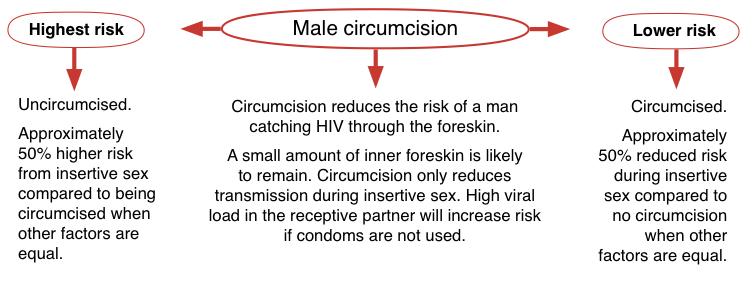Male circumcision

In heterosexual sex, a circumcised man has a 50% lower chance of catching HIV compared to a man who is not circumcised.
Male circumcision does not reduce the risk of transmitting the virus. It does not protect from other routes of infection.
This protection might be because the glans (penis head) in uncircumcised men contains a higher proportion of HIV target cells.
The inner foreskin of the penis is a membrane that HIV can easily penetrate.
It is also more delicate and more sensitive to damage than skin. So contact between the inner foreskin and genital fluids (vaginal secretions, semen or rectal mucus) is a way to catch HIV.
The longer the contact the more time HIV has to overcome this barrier.
The reason similar protection has not been seen in studies of gay men is likely because most gay men enjoy both active and passive sex.
So gay men who are exclusively insertive may have a similar level of protection, but only for insertive sex.
So far studies have not been able to show this.
If viral load is undetectable, there is no risk of HIV, even if someone is uncircumcised.
PrEP also protects against HIV, even if uncircumcised.
Last updated: 1 June 2021.
